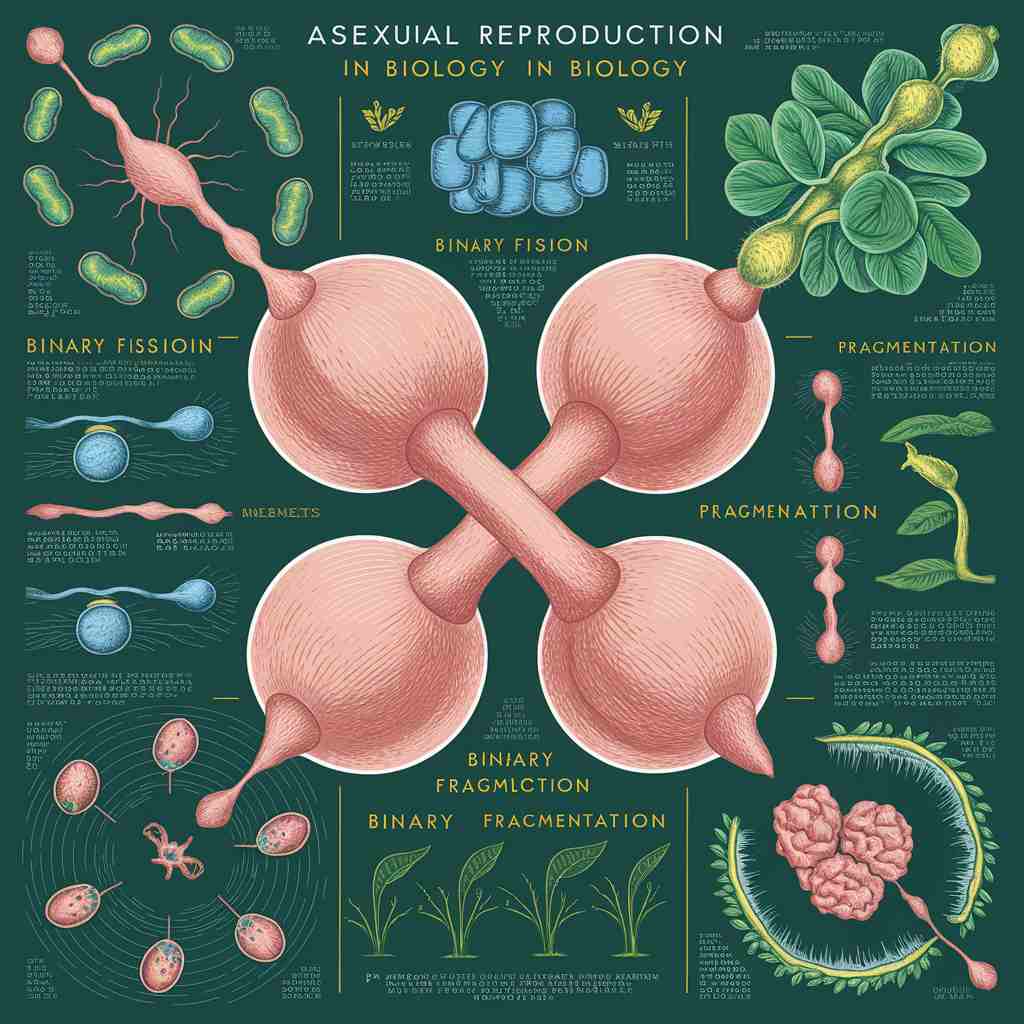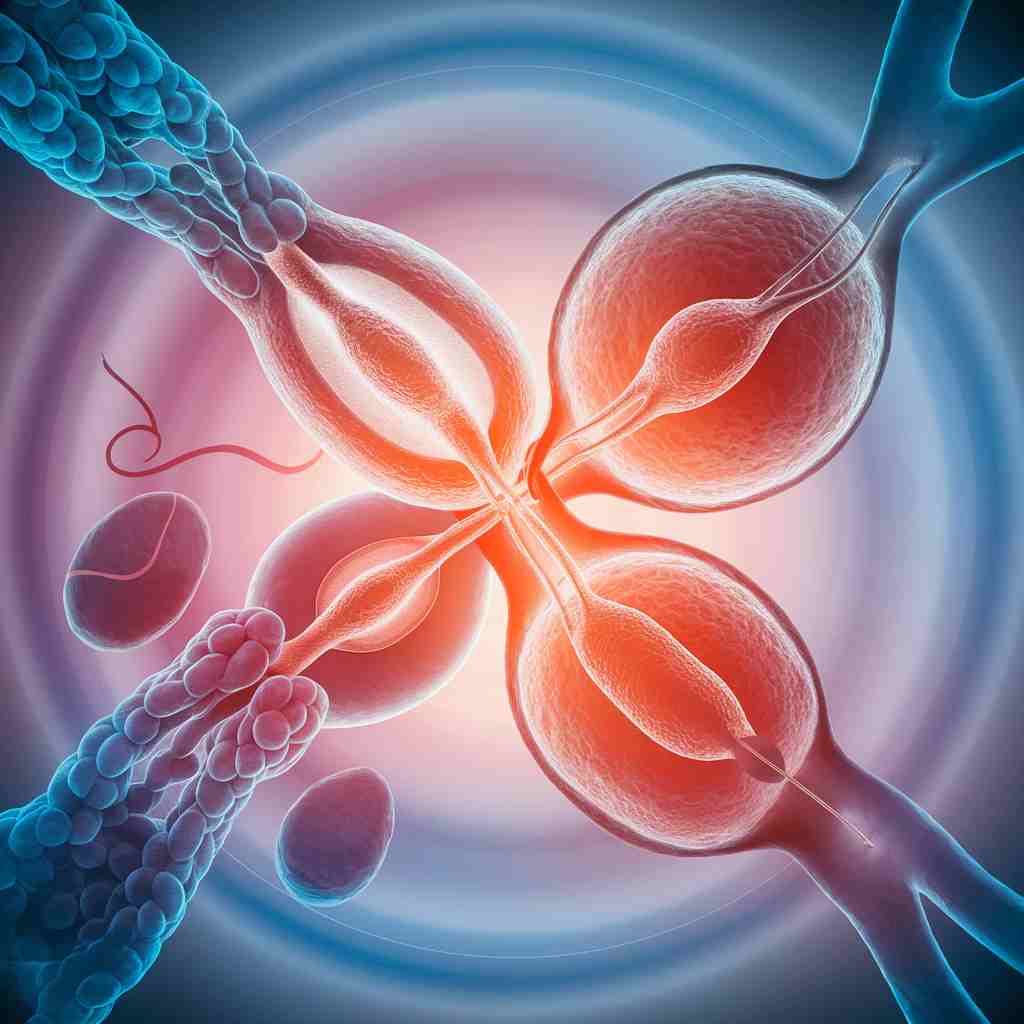Asexual vs. Sexual reproduction are the two primary ways that organisms reproduce. In stable circumstances, asexual reproduction, which involves a single parent and produces genetically identical offspring, ensures rapid population expansion. This technique is widespread in microorganisms, some plants, and some animals, including hydras. On the other hand, two parents are needed for sexual reproduction, which results in genetically varied offspring through the blending of both parents’ genetic material, improving adaptability and survival in shifting settings.
Table of Contents
Asexual Reproduction

Asexual reproduction is the process by which an organism with a single parent gives birth to genetically identical children. This procedure depends on mechanisms like binary fission, budding, vegetative propagation, or spore formation and does not include the fusion of gametes (sperm and egg). Consequently, the progeny get all their genetic material from a single parent, resulting in clones with minimal to negligible genetic variation.
Sexual Reproduction

Sexual reproduction is a process of reproduction in which the genetic material of two parent organisms is combined. Usually, this is done by fusing male and female gametes (sperm and egg). By combining genetic features from both parents, this process produces children that increase genetic variety within a species. Meiosis and fertilization are two complicated processes that are commonly involved in sexual reproduction. These processes guarantee variety and adaptability in the offspring.
Asexual vs. Sexual Reproduction
The differences of Asexual vs. Sexual Reproduction are given below:
| S.N | Asexual Reproduction | S.N | Sexual Reproduction |
| 1) | Asexual reproduction is the process by which an organism with a single parent gives birth to genetically identical children. | 1) | Sexual reproduction is a process of reproduction in which the genetic material of two parent organisms is combined. |
| 2) | Abundant, but because of competition, possibly less likely to survive. | 2) | Due to genetic variety and parental care, it is less common but has a better survival rate. |
| 3) | It typically has a higher rate of reproduction. | 3) | Reproduction rates are typically lower. |
| 4) | No parental care is usually required for asexual reproduction. | 4) | Often requires some level of parental supervision during sexual reproduction. |
| 5) | Mutations are the main source of new characteristics. | 5) | Recombination of parental genes results in the emergence of new characteristics. |
| 6) | Better suited to surroundings that are steady and unchanging. | 6) | Better suited to situations that change and are variable. |
| 7) | Through asexual reproduction, dangerous mutations can spread swiftly and directly influence offspring. | 7) | The combination of genes from both parents can disguise or lessen mutations. |
| 8) | Specialized reproductive structures are not necessary for asexual reproduction. | 8) | Specialized reproductive organs or tissues are necessary for sexual reproduction. |
| 9) | Lack of genetic variety in asexual reproduction increases danger. | 9) | Genetic variety lowers the risk of sexual reproduction. |
| 10) | In stable circumstances, asexual reproduction makes population increase easier. | 10) | Due to genetic variety, sexual reproduction improves adaptation and survival in dynamic situations. |
| 11) | Quickly produces a large number of offspring through asexual reproduction. | 11) | Fewer offspring are produced at a time by sexual reproduction. |
| 12) | Asexual reproduction is found in bacteria, some plants (like strawberries), and some animals (like starfish and hydras). | 12) | Sexual reproduction is found in many plants (such as blooming plants) and most animals (such as fish, birds, and humans). |
| 13) | Less time and effort are needed for asexual reproduction. | 13) | Mating and procreation through sexual reproduction need more time and energy. |
| 14) | Simple, involves mitosis in asexual reproduction. | 14) | Complex, involving fertilization and meiosis, is sexual reproduction. |
| 15) | Asexual reproduction produces clones, or offspring that are genetically identical to their parents. | 15) | Through sexual reproduction, offspring inherit genetic variety from their parents’ gene combinations. |
| 16) | Asexual reproduction includes vegetative propagation (plants like potatoes and strawberries), binary fission (bacteria), budding (hydras, yeast), and spore formation (fungi). | 16) | Sexual reproduction involves pollination (flowering plants), internal fertilization (humans, birds), and external fertilization (fish, amphibians). |
Specific Examples
- Asexual Reproduction
- Binary Fission: Bacteria
- Budding: Hydras, yeast
- Vegetative Propagation: Strawberries, potatoes
- Spore Formation: Fungi, algae
- Sexual Reproduction
- Humans: Internal fertilization, complex reproductive systems
- Birds: Internal fertilization, egg-laying
- Flowering Plants: Pollination involving male (pollen) and female (ovule) gametes
- Fish: Many use external fertilization, releasing eggs and sperm into the water
These points highlight the key distinctions of Asexual vs. Sexual Reproduction and offer a variety of illustrations that highlight the diversity and adaptable tactics of life in Asexual vs. Sexual Reproduction modalities. Asexual vs. Sexual reproduction are two basic methods of life propagation, each with unique benefits and difficulties. In stable conditions, asexual reproduction, which involves a single parent and produces genetically identical offspring, allows for efficient population expansion.
Frequently Asked Question(FAQ)
What is the main difference between asexual and sexual reproduction?
Whereas sexual reproduction requires two parents and results in genetically different kids, asexual reproduction uses just one parent and creates genetically identical offspring.
What are the advantages of sexual reproduction?
The major advantages are the possibility of evolution through the combination of various genetic features and genetic variety, which improves adaptability and survival.
Related Articles




